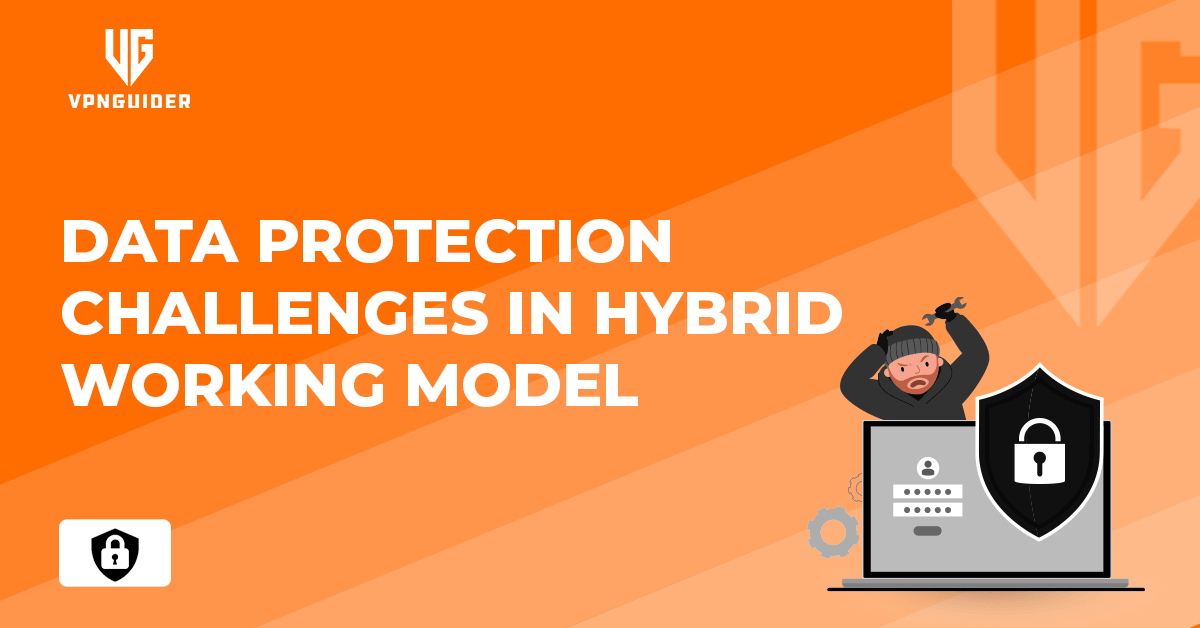
Organizations are discovering that their workforce is unwilling to give up remote work as offices reopen. People who began working remotely due to COVID-19 largely support it and plan to do so in the future. Companies can no longer claim that they can’t operate remotely (a popular argument for avoiding remote work before 2020). But, Hybrid Model invites many Data Protection Challenges.
By 2020, practically every team was discussing remote work. What was the best way to do it, what were the hurdles, and if it was a good fit for them? Now that people are starting to assemble in person again, how can firms effectively integrate remote workers with an in-person component in their existing office spaces?
Still, they can only expect employees to return to the office part-time in the face of an ongoing worldwide pandemic. The most popular option is the hybrid model, which is a problem for any firm.
As organizations continue to adapt to the post-pandemic world, the hybrid work model has emerged as the preferred choice for both employers and employees. While remote work gained momentum during the COVID-19 pandemic, the hybrid model—combining in-office and remote work—has become the new standard. However, this shift brings significant data protection challenges that organizations must address to ensure security and compliance.
What is a Hybrid Work Model?
A hybrid work model allows employees to split their time between working remotely and in the office. This flexibility caters to individual preferences and organizational needs, but it also introduces complexities in managing data and maintaining privacy. There is no one-size-fits-all approach; each organization tailors its hybrid model based on its unique requirements.
Popular Hybrid Work Model Structures in 2025
- Remote-First: Employees primarily work remotely, with occasional office visits for meetings or collaboration.
- Office-Occasional: Employees work in the office a few days a week and remotely the rest of the time.
- Office-First, Remote Allowed: Employees are expected to work in the office most of the time but have the flexibility to work remotely when needed.
Data Protection Challenges in the Hybrid Model
While the hybrid model offers flexibility, it also raises critical data protection and privacy concerns. The technologies enabling hybrid work—such as occupancy management software, desk booking systems, and employee monitoring tools—rely heavily on data collection. This creates vulnerabilities that organizations must address.
Legal Risks

Data gathering is governed by privacy regulations such as the General Data Protection Regulation (GDP) of the European Union, the California Consumer Privacy Act (CCPA), and numerous recently adopted statutes. China’s Personal Information Protection Law (PIPL), which takes effect November 1, and the California Privacy Rights Act (CPRA), which supplements the CCPA, are the most recent. The Consumer Protection Act of Canada is also in the works (CPPA). Many other states in the United States are enacting or have implemented their legislation.
Noncompliance can have severe repercussions. For example, the maximum GDPR penalties are 20 million Euros or 4% of a company’s global revenue. And the penalties are piling up: Facebook’s WhatsApp service was recently fined $270 million by Ireland. Luxembourg had previously penalized Amazon $886 million and Google $57 million. This is different from pocket change.
HR Risks
There’s also a lot to be concerned about regarding human resources with Data Protection. Take, for example, the Daily Telegraph, a British daily. By putting motion trackers under the desks of its reporters, management hoped to keep track of how much energy and space was being used. Employees were outraged and protested after learning of the changes with little notice. The publication removed the trackers in reaction to the outcry. What are the results? Employee morale plummets, and money is squandered.
Employees may be upset with data collecting even if they are given more notice, especially if it concerns personally identifiable information or PII. Some businesses want information on who occupied space and when they arrived and left. Companies may even keep track of how long someone spends in the restroom! With this degree of information, the legal risks increase, and businesses face employee resistance, as well as lousy morale, low productivity, and high turnover—all of which feed one another and jeopardize a company’s financial health.
FAQs
Security Risk

The first difficulty could be that security in a diverse workplace is a shifting objective. There is no feasible method to set up a security perimeter with employees requiring remote access to the company network on a wide range of devices and from every imaginable location.
We’re talking about a workforce that has spent the previous year experimenting with new work methods. They’re more mobile now, hopping between devices and networks, and they’re also more likely to use cloud collaboration tools to communicate potentially sensitive information among coworkers. Users combine personal and corporate data in more significant numbers than ever before, making them more vulnerable to phishing assaults thus compromising Data Protection.
Network access
Another big Data Protection challenge for companies is managing workers logging in to company devices from various locales. The vulnerabilities are increasing as companies expand that network and more people work from home.
Endpoint breaches

Because remote and hybrid workers use multiple devices for work and connect with unmanaged devices, which raises the potential for data leakage, another excellent concern is endpoint breaches. While most IT-managed devices automatically download and install security patches when connected to the company network, that’s not necessarily happening when someone is working remotely.
Disruption
Last but not most minor challenge of a hybrid workforce is that the disruption of established processes, like productivity, communication, and collaboration, will continue, and the data can be lost or compromised because of repeatedly breaking chains.
Conclusion
The benefits of a remote or hybrid workforce are plentiful, which can further be maximized by instituting a robust data protection system. As technology evolves, the threat landscape will get more sophisticated, but so will the resilience of data privacy initiatives. Building a sustainable security culture with the right tools and making privacy a part of the organization’s DNA is a straightforward way ahead. Adopting VPN service in whole work suites of any company is the ideal go-to solution for data protection challenges in Hybrid working models.